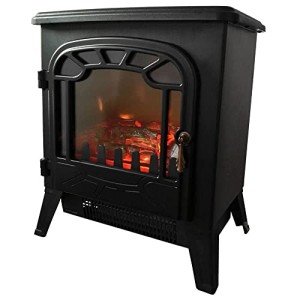This Is A Guide To Fireplace In 2024
The Fireplace: A Warm Embrace of Tradition and Comfort
Fireplaces have been an important part of human habitation for centuries, serving as a source of heat, a meeting place, and a sign of convenience. While the modern variations might differ extremely from their ancient forefathers, the appeal of a fireplace withstands. Cheap Fireplaces out the different elements of fireplaces, including their history, function, types, and upkeep, while likewise resolving regularly asked concerns.
The Evolution of Fireplaces
Fireplaces date back to prehistoric times when open flames were utilized for cooking, heating, and protection from wildlife. Over the centuries, fireplaces evolved from simple fire pits to the sophisticated performances we see today. Here is a quick timeline of their advancement:
- Prehistoric Era: Cavemen utilized open flames for warmth and cooking. Wind and smoke typically blew into homes.
- Middle Ages: Stone and brick fireplaces ended up being common in homes and castles, including chimneys to carry smoke outside.
- Renaissance: Elaborately designed mantels emerged, and fireplaces ended up being centers of social interaction.
- Industrial Revolution: Innovations in heating products resulted in a range of styles and functionalities.
- Modern Era: The development of gas, electric, and bioethanol fireplaces supplied cleaner alternatives to traditional wood-burning systems.
Table 1: The Evolution of Fireplaces
Age
Qualities
Prehistoric Era
Open flames for warmth and cooking
Middle Ages
Stone and brick structures with early chimneys
Renaissance
Elaborate mantels, social centers
Industrial Revolution
Diverse designs, introduction of brand-new products
Modern Era
Gas, electric, and bioethanol options
The Purpose of a Fireplace
Fireplaces serve dual purposes: they provide physical heat and create a psychological environment. House owners typically gather around the fireplace to bond, share stories, and take pleasure in a cozy setting. The radiance of a fire can be relaxing, adding to a sense of relaxation and intimacy. Beyond personal pleasure, fireplaces likewise use functional benefits, including:
- Home Heating: Effective heat source, specifically in colder environments.
- Increased Home Value: A properly designed fireplace can boost the visual worth of a home.
- Emergency Heating: In case of power outages, wood-burning fireplaces can work as a crucial heat source.
- Aesthetic Appeal: A centerpiece that contributes to interior decoration.
Kinds of Fireplaces
Today, fireplaces are available in numerous styles and fuel types, accommodating a varied variety of preferences and settings. Here are some typical types:
Wood-Burning Fireplaces:
- Traditional fire pits
- Traditional masonry fireplaces
- Require significant upkeep and chimney upkeep
Gas Fireplaces:
- Available in both direct vent and ventless ranges
- Easier to use and keep than wood-burning fireplaces
- Provide immediate heat with a flick of a switch
Electric Fireplaces:
- Offer associated heat sources without real flames
- Frequently designed to mimic traditional fireplaces
- Ideal for smaller spaces and homes without a chimney
Bioethanol Fireplaces:
- Use bioethanol fuel, providing a sustainable option
- Require no ventilation and can be put anywhere
- Safe and easy to preserve
Table 2: Types of Fireplaces
Type
Fuel Source
Functions
Upkeep Requirements
Wood-Burning
Wood
High atmosphere, heat source
Routine chimney cleaning
Gas
Gas or propane
Instant heat
Minimal, periodic servicing
Electric
Electrical power
Easy setup
Extremely low maintenance
Bioethanol
Bioethanol fuel
Ventless, portable
Low, primarily cleaning
Upkeep and Safety Considerations
Owning a fireplace involves certain duties, specifically concerning its safe operation and long-term upkeep. Here are very important maintenance ideas and security standards:
Maintenance Tips:
- Annual Inspection: Always have your chimney and fireplace checked at least when a year by a qualified service technician.
- Routine Cleaning: Clean out ashes and particles after each usage, and make sure the flue is open before beginning a fire.
- Check for Cracks: Inspect masonry for fractures or damage to prevent structural concerns.
- Use Proper Fuel: Only usage dry, skilled wood for wood-burning fireplaces; do not burn treated wood.
Security Guidelines:
- Install Smoke Detectors: Ensure smoke detectors are practical, evaluating them regular monthly and changing batteries as needed.
- Keep a Fire Extinguisher: Have one nearby, even if a fireplace is utilized rarely.
- Monitor Flames: Never leave a fire unattended, and ensure children and animals are kept track of around the fireplace.
Regularly Asked Questions (FAQs)
1. How can I lower smoke from a wood-burning fireplace?
To minimize smoke, usage dry, skilled wood, and guarantee that your chimney is clean and unblocked.
2. Is it safe to utilize gas fireplaces during a gas leakage?
Never ever use a gas fireplace during a gas leak. Instantly leave the location and contact gas services for aid.
3. Can I set up an electric fireplace myself?
Electric fireplaces are usually simple to install, but it is recommended to speak with specialists to ensure safety and compliance with regional building regulations.
4. What is the very best kind of fireplace for small spaces?
Electric fireplaces or bioethanol designs are typically best for small spaces, as they do not need comprehensive ventilation or structural adjustments.
Fireplaces have transcended their original purpose of offering heat to end up being cherished components of home design and family life. They stimulate memories of heat, celebrations, and togetherness while supplying practical benefits that enhance modern living. By comprehending the different types of fireplaces, their upkeep, and security practices, homeowners can enjoy the classic appeal of this precious feature for generations to come.
